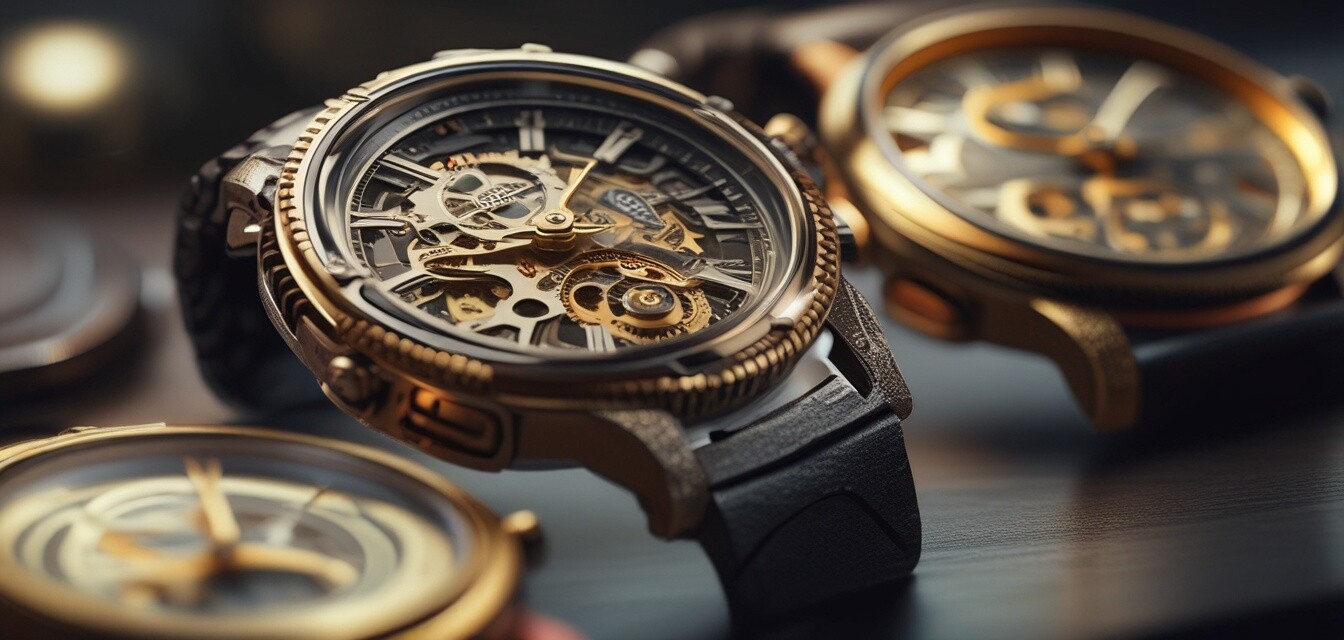
Understanding the Differences Between Watch Movements
- Watch movements are categorized primarily into three types: mechanical, automatic, and quartz.
- Mechanical movements require manual winding, while automatic movements self-wind through motion.
- Quartz movements are battery-operated and are known for their accuracy.
- Understanding watch movements can significantly influence purchasing decisions.
- Regular maintenance is crucial for preserving accuracy in mechanical watches.
Choosing a luxury watch is more than just selecting a stylish accessory; it involves understanding the intricate mechanisms that enable these timepieces to function. In this article, we will break down the different types of watch movements, providing you with clear insights to help you make an informed decision when purchasing your next luxury watch.
What are watch movements?
The movement of a watch refers to the mechanism that drives the watch’s functions, including timekeeping. Understanding different watch movements can help you appreciate the craftsmanship involved and guide your purchasing decisions.
Types of Watch Movements
| Type of Movement | Description | Advantages | Disadvantages |
|---|---|---|---|
| Mechanical | A movement that relies on a series of gears and springs, manually wound by the user. | Craftsmanship; traditional and admired for artistry. | Requires regular winding; less accurate over time. |
| Automatic | A self-winding movement that uses the natural motion of the wearer to wind the mainspring. | Convenient and combines complexity with practicality. | Can stop if not worn for extended periods; may need occasional servicing. |
| Quartz | A battery-operated movement that utilizes quartz crystal for timekeeping. | Highly accurate; minimal maintenance required. | Less regarded as a luxury; battery needs replacement. |
Mechanical Watches
Mechanical watches are the oldest type of watch movement. They are fascinating pieces of engineering, and enthusiasts admire their intricate designs. Once wound, the gears and springs create the energy needed to power the watch hands, allowing for precise timekeeping. However, they require regular winding and can fall out of sync over time.
Automatic Watches
Automatic watches are similar to mechanical watches, but they have a rotor that winds the mainspring using the natural motion of the wearer’s wrist. This means you don't need to wind them manually as long as you wear them regularly. Nonetheless, if left unworn for too long, they may stop functioning, requiring a reset.
Quartz Watches
Quartz movements have revolutionized the watch industry since their introduction. Utilizing a quartz crystal as a timekeeping element results in extraordinary accuracy and requires less maintenance than mechanical options. Despite their reliability, some watch enthusiasts do not perceive them as luxurious compared to the artisan craftsmanship of mechanical watches.
Comparing Watch Movements
| Criteria | Mechanical | Automatic | Quartz |
|---|---|---|---|
| Accuracy | Moderate | High | Very High |
| Maintenance | High | Moderate | Low |
| Winding Type | Manual | Self-winding | Battery |
| Craftsmanship | High | High | Low |
| Cost | Varies | Varies | Generally lower |
Maintenance of Watch Movements
Different movements require distinct types of maintenance. While quartz watches can be simply repaired by changing the battery, mechanical and automatic watches need to be serviced approximately every 3-5 years to ensure they perform optimally. This service usually involves disassembly, cleaning, and lubrication of the movement components.
Conclusion
Understanding the different types of watch movements is essential for anyone considering a luxury watch purchase. Whether you are drawn to the tactile experience of a mechanical watch, the self-winding convenience of an automatic, or the precise accuracy of quartz, each type has its pros and cons. Make sure to consider your lifestyle, maintenance preference, and appreciation for craftsmanship when selecting your next timepiece. For more information on brands offering different types of movements, check our category pages for Rolex, Omega, and Cartier.
Key Takeaways
- The choice of movement affects accuracy and maintenance.
- Personal preferences and lifestyle should influence your decision.

